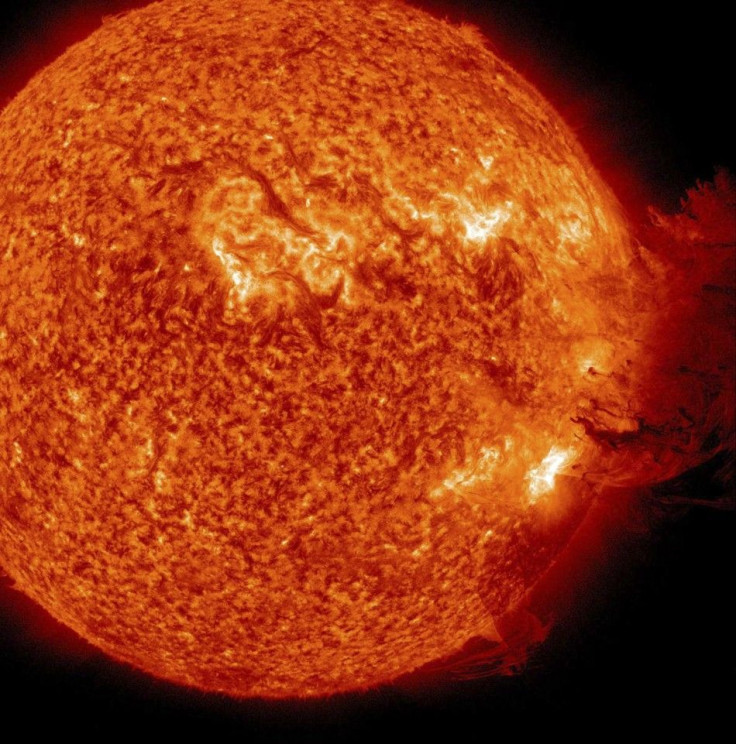Minor Solar Storm Likely To Hit Earth Today; May Cause Power Outage, Satellite Disruptions
KEY POINTS
- A G1 class geomagnetic storm is relatively harmless
- The storm has erupted from a hole in the Sun
- It will likely form northern lights in the sky
An explosive activity marking the peak phase of our Sun's magnetic 11-year cycle has been observed by space stations. As a consequence, there is a possibility of a G1 class solar storm striking earth on Wednesday, warn forecasters.
G1 class geomagnetic storms are relatively harmless. However, they may cause power grid failures, slight disruption in satellite functions and impact migratory birds in some areas.
Solar storms are caused by fast-moving solar winds that break out from Sun's atmosphere. Solar flares and coronal mass ejections have been observed as part of the activity phase of the Sun since the beginning of the year.
The Sun is at a distance of 150 million kilometers from Earth. Yet, the flurry of activity on the giant star can make its presence known on Earth.
Solar storm forecast to hit Earth on WEDNESDAY - here is what you need to knowhttps://t.co/7pe2QBU7oc
— TheSouthAfrican.com (@TheSAnews) August 2, 2022
Earth is under a solar storm warning for Wednesday due to the chance of a minor G1-class geomagnetic storm hitting our planet.
For instance, at 23.09 UTC (6.09 p.m. ET) last Sunday, an explosion in the Sun's northeastern region and a C9.3-class solar flare was detected by our satellites.
"The intensity is probably an underestimate because it was partially eclipsed by the edge of the Sun. Nasa's Solar Dynamics Observatory (SDO) saw hot debris flying away from the blast site," spaceweather.com, which tracks solar activity, said in a statement. "The explosion is significant because it may herald an active region set to emerge over the Sun's northeastern limb later this week. A new sunspot group could bring an end to weeks of relative quiet."
Solar flares travel at speeds of up to 2.9 million kilometers per hour. As a result, Earth's magnetic field gets slightly compressed by the waves of high-energy particles.
Presently, a southern hole has been detected in the Sun's atmosphere, which is releasing gaseous material. This release in combination with strong solar winds might form a minor G1-class solar storm on Aug. 3, forecasters from the National Oceanic and Atmospheric Administration (NOAA) noted.
An interesting effect of the flares would be aurora borealis or Northern lights, which will form due to refracted light as the solar radiation bombs the atmosphere at odd angles. This time, the auroras are likely to appear in the skies over Canada and Alaska.
The largest solar storm to date is the 1859 Carrington Event, which reportedly released roughly the same amount of energy as 10 billion 1-megaton atomic bombs.

© Copyright IBTimes 2024. All rights reserved.





















